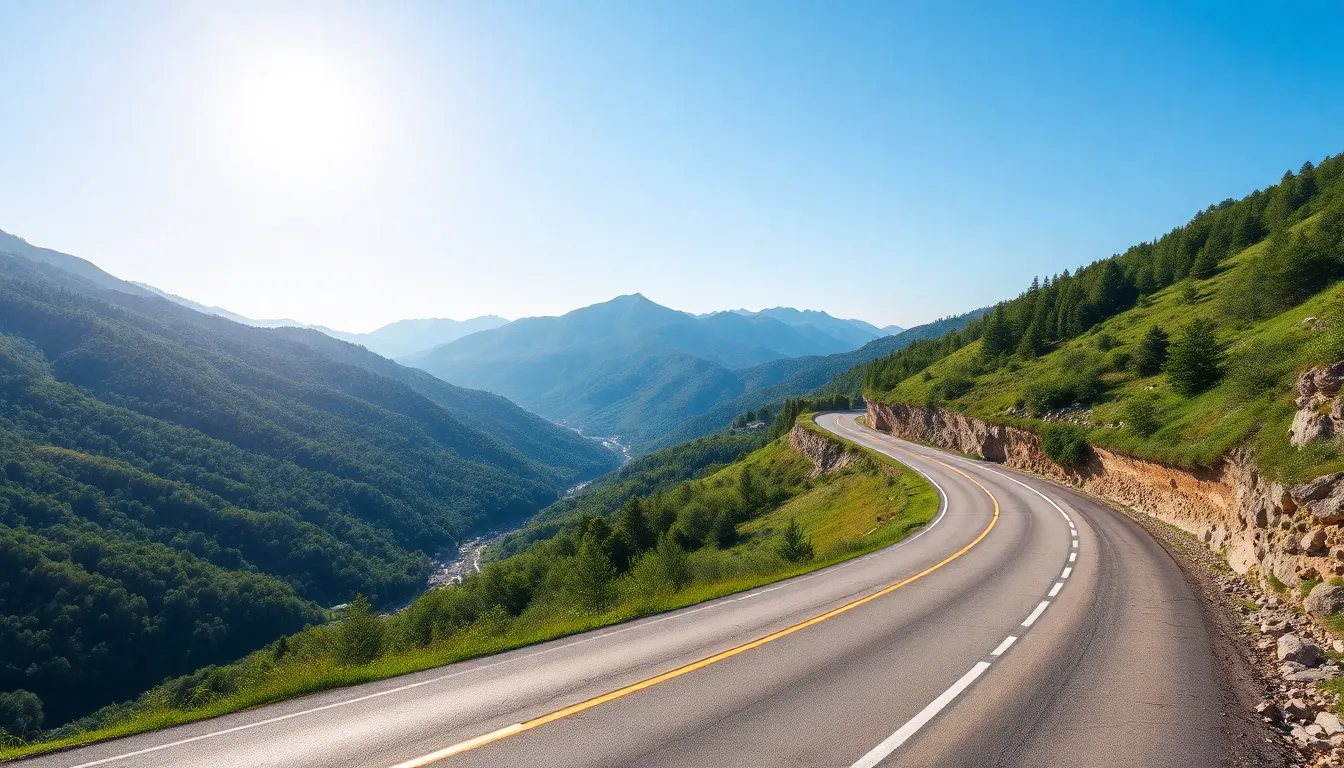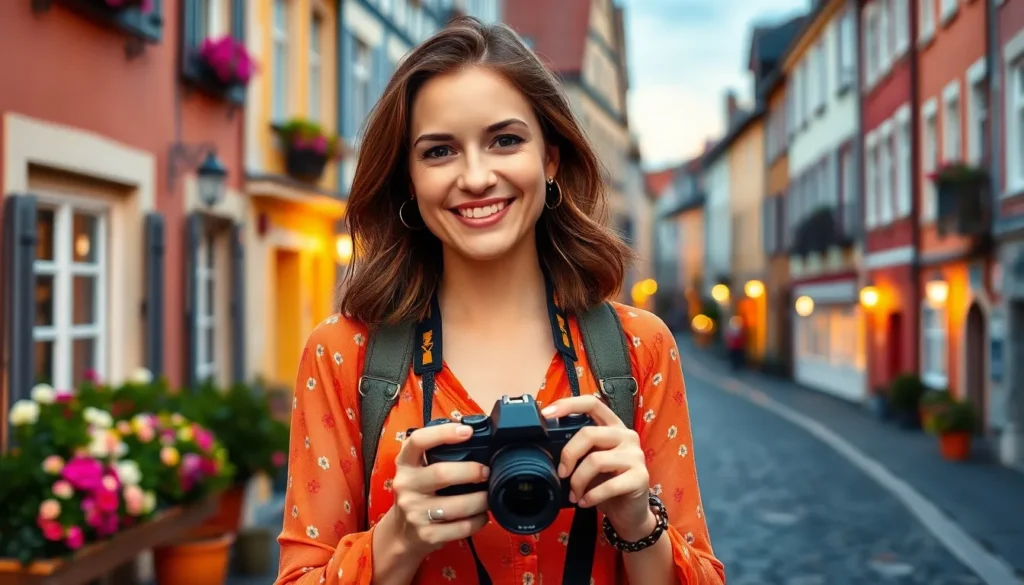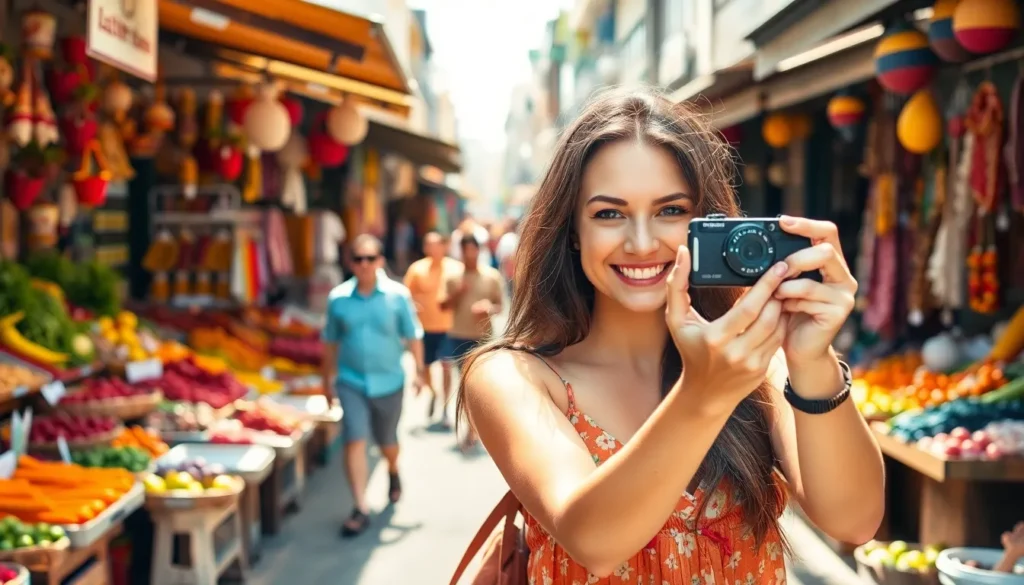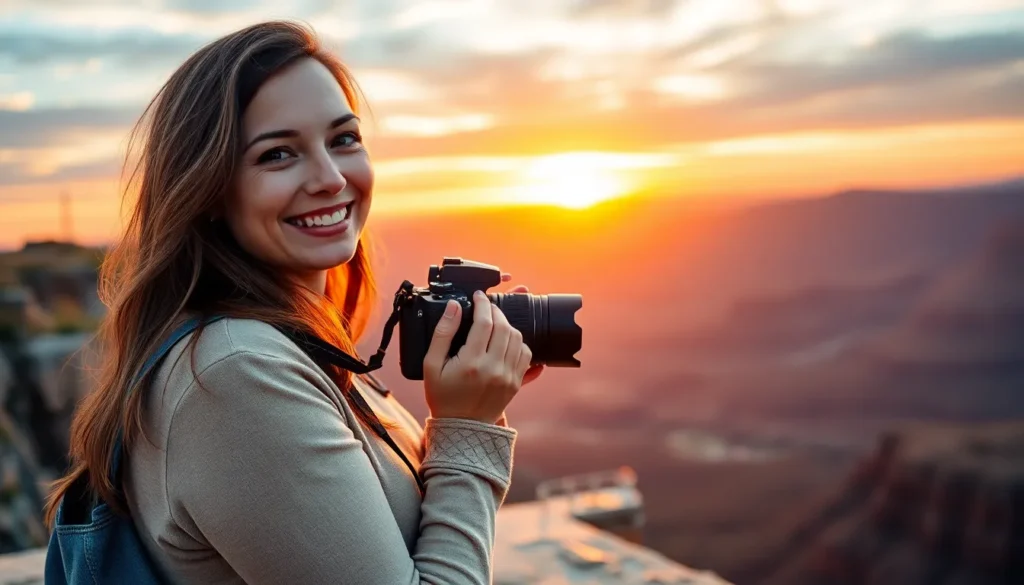Travel photography isn’t just about snapping pictures; it’s about capturing memories that’ll make your friends green with envy. With the right tips, anyone can transform their vacation snaps from “meh” to “wow, where’d you learn to do that?” Imagine your Instagram feed filled with vibrant sunsets, bustling markets, and candid moments that tell a story.
Travel Photography Tips
Capturing stunning images during travel requires attention to detail. These tips will enhance photography skills and create memorable photos.
Choose the Right Gear
Selecting appropriate gear makes a significant difference in photo quality. Cameras range from compact point-and-shoot types to DSLRs and mirrorless systems. Each gear type has its benefits in portability and image quality. Lenses also play a crucial role; wide-angle lenses capture landscapes, while telephoto lenses focus on distant subjects. Tripods assist with stability, especially in low light conditions. Extra batteries and memory cards ensure that photographers are prepared for long days of shooting.
Understand Camera Settings
Familiarity with camera settings elevates your photography. ISO, shutter speed, and aperture serve as the foundation of exposure. Low ISO values reduce noise in bright conditions, while high values are suitable for low light. A fast shutter speed freezes motion, ideal for action shots, whereas a slower speed can create beautiful motion blur. The aperture controls depth of field; a wide aperture blurs backgrounds, highlighting subjects. Mastering these settings enables photographers to adapt to varying light and scene conditions effectively.
Composition Techniques

Effective composition enhances travel photography significantly. Mastering key techniques can lead to striking images that tell a story.
Rule of Thirds
Using the rule of thirds creates balance in photos. Dividing the frame into a 3×3 grid, photographers place key subjects along the grid lines or at their intersections. This technique draws attention to focal points while allowing for a more dynamic composition. For example, positioning the horizon along the top or bottom line guides the viewer’s eye across the image. This method encourages exploration within the scene, making it visually appealing. Adopting this rule can transform ordinary shots into captivating visuals that resonate with viewers.
Leading Lines
Incorporating leading lines directs the viewer’s attention through an image. Roads, rivers, or pathways act as natural lines that guide the eye toward a focal point. These lines create depth and perspective, adding a three-dimensional feel to photos. For instance, capturing a winding road can enhance a travel scene, making it both inviting and intriguing. Leading lines invite exploration, encouraging viewers to follow the flow of the image. Utilizing this technique ensures that the composition remains engaging and immersive, elevating the overall impact of travel photographs.
Lighting and Timing
Lighting plays a crucial role in travel photography. Timing also affects how a scene is captured.
Golden Hour Photography
Golden hour occurs shortly after sunrise and just before sunset. During this time, sunlight emits a warm, soft glow that enhances colors in photographs. Photographers often capture landscapes and portraits during these moments, as the light reduces harsh shadows and creates captivating images. Planning to shoot during golden hour transforms ordinary scenes into stunning visuals. The additional benefit of fewer crowds at popular locations adds to the appeal.
Avoiding Harsh Sunlight
Harsh midday sunlight can create unflattering contrasts and overly bright highlights. To minimize adverse effects, consider shooting in shaded areas or use diffusers to soften the light. Photographers often choose overcast days, as clouds provide natural diffusion. Early morning or late afternoon offers advantageous lighting conditions, making subjects appear more vibrant. Adjusting camera settings, like using a faster shutter speed, helps cope with bright conditions. By being mindful of sunlight intensity, photographers capture more balanced and engaging images.
Post-Processing Tips
Post-processing is essential for enhancing travel photos. It allows photographers to refine their images and bring their creative vision to life.
Basic Editing Techniques
Adjusting exposure enhances image brightness and detail. Cropping can improve composition, drawing attention to the subject. Tweaking contrast adds depth, making colors pop. Saturation increases color vibrancy, transforming dull images into lively visuals. Sharpening focuses on details, creating a crisper look. These basic techniques provide a solid foundation for elevating photos.
Using Editing Software
Choosing the right editing software simplifies the post-processing workflow. Popular options include Adobe Lightroom and Photoshop. Both tools offer extensive features for fine-tuning images. Using presets can expedite the editing process, allowing photographers to apply consistent styles. Layering adjustments provides flexibility for detailed edits. Familiarizing oneself with tools, such as brushes and filters, opens new creative possibilities. Ultimately, the chosen software shapes the final aesthetic of the travel images.
Conclusion
Travel photography is an exciting journey that allows individuals to capture the essence of their adventures. By mastering essential techniques and understanding the nuances of composition lighting and post-processing, anyone can elevate their photography skills.
With the right gear and a keen eye for detail photographers can transform ordinary moments into extraordinary memories. Whether it’s the golden hour glow or the perfect framing of a scene each element plays a crucial role in creating captivating images.
As photographers continue to explore new destinations they should embrace creativity and experimentation. This approach not only enhances their skills but also enriches their travel experiences. With these tips in hand they’re well-equipped to share their unique perspectives and inspire others through stunning visuals.



